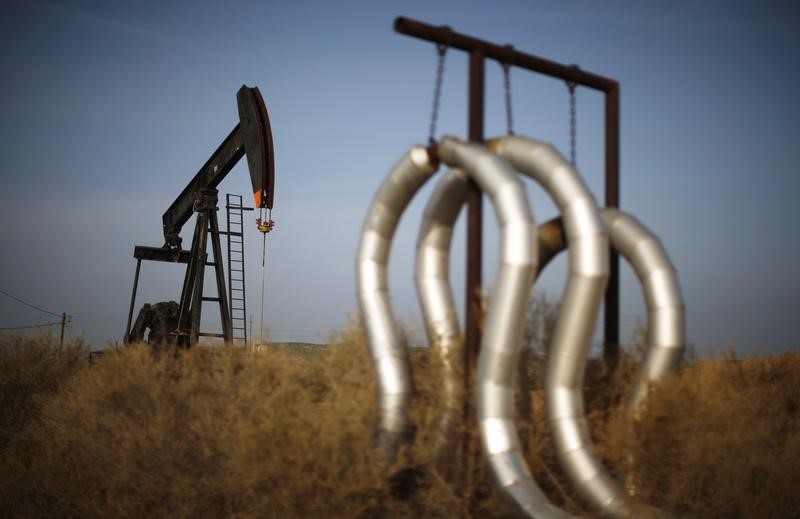By Barani Krishnan
NEW YORK (Reuters) - Oil futures edged lower for a second straight session on Monday in thin trade as European markets observed the Easter holiday and as hedge funds and other big speculators were still hesitant to wager on a two-month long price rebound amid hefty crude inventories.
Sentiment in Brent and U.S. crude's West Texas Intermediate (WTI) futures remained soft with investment banks, such as Barclays (LON:BARC) and Macquarie, warning that market fundamentals were weak enough to pull prices back to $30 a barrel levels.
"There's just been too much U.S. crude builds lately for the market to ignore," said Tariq Zahir, who is betting WTI for delivery in the near-term will weaken further versus long-term contracts, expanding the market's so-called contango structure.
Brent (LCOc1) settled down 17 cents at $40.27 a barrel. Reuters data showed trading in the London-based benchmark at just over 73,000 lots versus the 200,000 typical on a regular session.
New York-based WTI (CLc1) finished down 7 cents at $39.39.
Both benchmarks are up about 50 percent from 12-year lows hit in mid-February.
Despite that advance, weekly data from the U.S. Commodity Futures Trading Commission suggested money managers, including hedge funds, were hesitant to wager all the way on a WTI rally although a few were betting on another price collapse.
Managed money's gross long positions in WTI <3067651MLNG> have barely risen since January and inched up by just 6,000 lots to around 300,000 lots in the week to March 22, CFTC data showed. The number of short positions <3067651MSHT> slipped to nearly 64,000 lots, or around 64 million barrels of oil.
U.S. crude inventories
Most banks expect little upside to oil prices in the near future.
"The market likely remains oversupplied by around 0.6 million bpd (barrels per day) through 1H16 and inventories will continue to build from already high levels," analysts at Jefferies International forecast for the first half of the year.
Barclays said net flows into commodities totaled more than $20 billion in January-February, the strongest start to a year since 2011, and prices could fall 20 to 25 percent if that were reversed.

"Were such a scenario to unfold, the price of oil could fall back to the low $30s," it said.